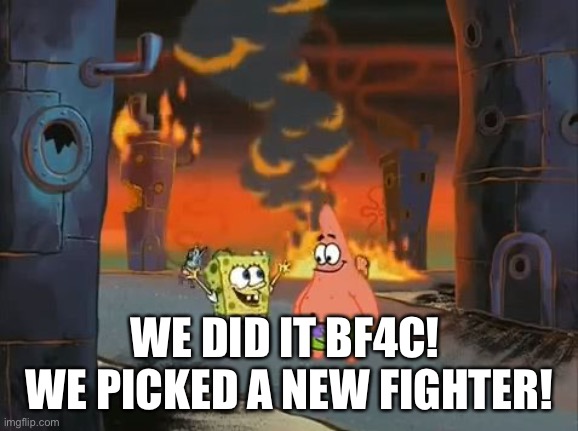Now that we are down to the final stretch of the Future Fighter Capability Project (FFCP), it seems only right to devote some time learning about how the winner will be ultimately chosen.
Some suggest that the Joint Strike Fighter's selection is a foregone conclusion. This is due to the F-35 winning similar competitions in Switzerland and Finland. While this is an important bellwether, it should be noted that these competitions were held using different parameters and criteria. It should also be noted that both announcements have met with skepticism and protest. This is especially true when it comes to claims the F-35 won on "economical" grounds. It turns out the one of the reasons why the F-35 was cheaper was because it would be flown only 140 hours per year instead of 180. Other aspects of the competitions seem to give the F-35 distinct advantages as well. (This might be worth its blog post...)
Whatever the case, it is important to remember that Canada's selection process is unique; as are each bid.
Contrary to what some people believe, the winner will not be decided by jet fighter fanboys arguing over the internet. Nor will it be decided by a vote in the House of Commons (not directly; more on this later), Prime Minister Trudeau, nor Royal Decree by the Queen herself. Contacting your MP about your favorite fighter will be of little use.
The truth is much more mundane and boring. Canada's next fighter will be decided by *GASP* A COMMITTEE.
Try to contain your excitement.
Canadian military purchases go through a five step process:
- Identification. This defines the need in broad terms. In this case, a fighter jet capable of fulfilling Canada's needs.
- Options Analysis. Finding out exactly what Canada needs are and what options are available.
- Definition. This step concentrates on HOW Canada's needs are to be met. For the FFCP, this is the current stage.
- Implementation: Procuring the new equipment, setting up, and initial training.
- Closeout: When all contract obligations are met and operating capabilities have been achieved.
So how will the winner be decided?
The scorecard was drawn up by the Department of National Defence (CAF), Department of Public Services and Procurement Canada (representing the taxpayer), and the Department of Innovation, Science and Economic Development (ISED) (representing Canadian industry).
Currently, the two finalists (F-35 and Gripen) have met all requirements as defined in the "Options Analysis" stage. Moving forward, the two will be judged by a
predetermined criteria based on 60% Technical Merit, 20% Cost, and 20% Industrial Merit.
This may seem like an overly complicated process, but there is good reason behind it. For one, it keeps the decision at an "arms length", shielding the current government from any appearance of impropriety. This is important, as sole-sourcing the JSF did little favors for the previous Harper government. It also keeps the the completion from being "tailor-made" for a specific candidate;
something that has been accused in the past.
Predicting which fighter will win given the current information is a fool's errand without knowing the exact details of scoring criteria and the exact nature of the manufacturer's bids... But let's do it anyway!
Technical Merit (60 points):
This category, drawn up by the DND, will undoubtedly favor the F-35. While it certainly cannot specify a "stealth fighter that is 15.7m long and 11m wide", it can define what missions the new fighter would be expected to do and how well it should perform them.
I would expect the F-35 to come out ahead here, especially if the emphasis is placed on ground attack missions, payload, and stealthy survivability. The Gripen may surprise a few here with a higher sortie rates, faster cruise speeds, and better-than-predicted electronic warfare suite.
Oddly enough, for an aircraft that is often criticized for its range; the Gripen could score very well when compared to the JSF in this department. While the Gripen E carries a paltry 3.4 tonnes of internal fuel compared to the F-35's 8.2 tonnes, the JAS 39E burns substantially less. It also has the option of carrying up to three 1700L (1.4t) or 1135L (0.9t) external fuel tanks. Saab is promising a slightly superior "combat range" and much higher "ferry range" than the JSF thanks to these tanks. As of yet, the F-35 still has
no options for external tanks. Yes,
some have been in the works, but so far they can only be categorized as "vaporware".
Given that the RCAF is mostly responsible for the "Technical Merit" category, and the F-35 is clearly their preferred choice, the JSF is almost sure to win this category. The Gripen may not be too far behind in the scoring, however.
Cost (20 points):
This category is almost certainly going to go to the Gripen.
Yes, there are some recent rumblings that the
F-35 is somehow "cheaper", not only in unit cost, but somehow operating costs. This takes a little unpacking:
Currently, the F-35's unit price is indeed less than the Gripen E. Most recent deliveries suggest a unit price of about $80 million for the JSF and $100 million for the Gripen. The caveat here is that the JSF has pretty much
entered peak production while the Gripen E
has just started. That means that the F-35 is at its cheapest while the JAS 39E is at its most expensive. One should not forget that the F-35's unit costs were in the
$200 million range in its early production. Full rate production of the Gripen E would undoubtedly reduce unit costs. Increased orders would also reduce unit costs as the R&D costs can be spread out more. A Canadian commitment of 88 aircraft would represent Saab's largest order for the aircraft, increasing current planned production by
two-thirds. Canada's order would in-and-of-itself reduce unit costs.
It is not unit costs, but
sustainment costs that will ultimately tip this category in Saab's favor. Underestimating long term costs were a major factor that
ultimately scuttled Canada's original F-35 buy, so do not expect that mistake to be made again. All evidence seems to point out that the F-35's cost per flight hour
seems to have bottomed out at a much higher than predicted level. Optimistically, cost per flight hour
might be reduced to about
$30,000(US) per flight hour by next year, and down to $25,000 per hour by 2025. Given recent inflation and labour shortages, these numbers seem less and less likely.
Industrial Merit (20 points):
This category will ultimately be the hardest to predict. Not because the contestants are so similar, but because they are so different.
Lockheed Martin's industrial benefit package is far more nebulous... But
potentially more lucrative. As a Joint Strike Fighter partner nation, Canada will (
and has) be given the opportunity to bid on F-35 related contracts. Given the massive scope of the F-35, this could lead to Canada building parts and doing the work on
thousands of jets. However, given the nature of the JSF program, no nation can be given any sort of guarantees. Contracts are awarded on a "best value" basis. Canada could receive far more
or far less industrial offsets than what it invests in the program. Thus far,
Canada has actually come out ahead relative to our investment, but competition for JSF-related work will remain high. Without a doubt, there will be "winners" and there will be "losers".
Further complicating matters is the fact that, because Lockheed Martin cannot promise any fixed industrial offsets, it will be penalized in this category. How much? We do not know.
Ultimately, Canadian Gripens will be mostly built and serviced in Canada. Canadian F-35s will have
brackets, bearings, and circuit boards built in Canada... But so will hundreds of other F-35s all over the world. Picture this category as Saab promising Canada a very large slice of a small pie and Lockheed Martin offering Canada a tiny slice of a very large pie...
but we'll have to fight for it.
In the end, I would say Saab has a slight advantage here. Their offer is a little more concrete, and they have been wise to partner up with some well established Canadian partners.
The Final Score?
Since we do not know the full parameters of how the Government of Canada will assess the fighter bids; nor do we know the specifics of the manufacturers' bids themselves, there is simply no way of knowing which fighter will ultimately be chosen.
Will Saab be able to make the argument that it offers a fighter that fulfills all of Canada's needs at a much more affordable price and attractive offset package? Will Lockheed Martin finally be able to put the F-35's controversial history behind it and make its case for being the only "5th Generation fighter" available?Only time will tell, but hopefully that time will be here soon.
Even when a fighter is picked, it still has one more test to pass. Its purchase must be added to the Federal Budget and that budget needs to be approved in a vote in the House of Commons. With a majority Government, such an act would be trivial. Since the Liberal Party of Canada does not have a majority of
seats in the House of Commons, they need the support of at least one other party to shore up the votes needed to pass a Federal Budget. Being the official opposition, it would be highly unlikely for the Conservative Party of Canada to support a Liberal Budget. Instead, the Trudeau government would need the support of either the
New Democratic Party or Bloc Quebecois .
ALL of these parties have
critical of the F-35 in the past. The NDP's defence critic has even gone on the record stating that Canada's next fighter
should be built in Canada.
This is where a meta-analysis comes in.
No single person, department, or political party has the singular power to pick Canada's next fighter. Instead, three government departments get to collectively decide which fighter best covers Canada's defense, economical, and industrial needs. Once that fighter is announced, its financing must be approved by both the sitting minority government
and one other party. Depending on the political whims of that particular day, a controversial fighter choice has the potential of triggering yet another
snap election nobody wants.
This is why the FFCP scoring system needs to be above reproach... Or at least pass the sniff test. The Liberal Government does not want to risk a
Motion of Non-Confidence over a controversial fighter choice. There is likely to be controversy either way, but there would be
some 'splaining to do if the JSF was ultimately picked after all this time, a "
reset",
criticism, and lengthy competition just to arrive at the same aircraft that was picked by the previous Government more than 10 years ago. While
Stephen Harper and
Peter MacKay would appreciate the vindication, it will not help the Liberal Party's reputation for
mismanaged military procurement.
JUST PICK A WINNER ALREADY!
Every indication seems to suggest that the RCAF
really wants the F-35. There is also plenty of pressure from the USA and other nations for Canada to "
join the cool kids". The lobbying pressure behind the Joint Strike Fighter is
immense. Some will also point to current events in the the
Ukraine and
South China Sea as reason enough for Canada to spare no expense when it comes to defence.
Politically, things look a little different. The last two elections have made it clear that the Liberal party needs to do something if it wishes to stay in power. Imagine the political capital that would be gained by announcing that Canada's next fighter will be built in Canada. Not only that, but it will meet Canada's needs at a much lower cost than the alternative.
Whatever the decision turns out to be, expect there to be at lease
some controversy... Followed by some sort of "
unforeseeable delays", and many more months, if not years, of angry fanboy bickering.
Just remember, the end is also another beginning.








Comments
Post a Comment